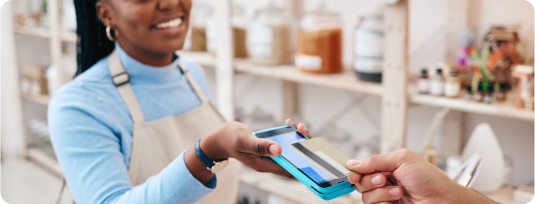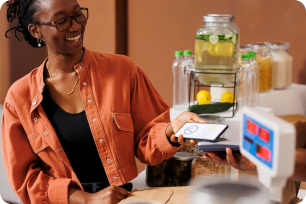Jul 2, 2024
How Safe is Contactless Payment? Exploring the Security and Benefits

The rise of technology has revolutionized the way we handle our financial transactions. Contactless payment is a convenient and swift method of completing transactions without the need for physical contact. Many fintech companies are switching to contactless payment methods and it has gained much popularity.
However, with any technological advancement comes concerns about security. In this article, we delve into the world of contactless payment, exploring its safety measures, potential risks, and benefits it offers to users.

Business Using Nearpays Virtual POS to Receive Payment
What is Contactless Payment
Contactless payment is a method of transaction that utilizes near-field communication (NFC) technology, enabling two devices to exchange data wirelessly when they are brought close together.
This technology is predominantly used in credit or debit cards, smartphones, and wearable devices. When a user taps their card or device on a point-of-sale (POS) terminal, the required payment information is transmitted, allowing for a swift and seamless transaction.
The Security of Contactless Payment
There are a number of security measures in place to protect users' financial data when making contactless payments. These include:
1. Limited transaction amounts: Most contactless payments have a cap on the amount that can be spent per transaction. This helps to minimize losses in the event that a card is lost or stolen.
2. Encryption: The data transmitted during a contactless transaction is encrypted, making it difficult for unauthorized parties to intercept and decipher the information.
3. Tokenization: Contactless payments use tokenization, where a unique, one-time code (token) is generated for each transaction. This means that even if a hacker manages to intercept a token, it cannot be used for any other transaction.
4. Biometric authentication: Many smartphones and wearable devices that support contactless payments incorporate biometric authentication, such as fingerprint or facial recognition. This adds an extra layer of security by ensuring that only the authorized user can initiate a payment.
5. Transaction verification: Contactless payments may require periodic verification through a traditional PIN or password, ensuring that the person using the payment method is the legitimate owner.
6. Loss and fraud protection: Financial institutions typically offer robust protection against unauthorized transactions. In case of a fraudulent payment, customers are often reimbursed for the unauthorized amount.
Potential Risks and Solution
While contactless payment systems are designed with strong security measures, there are some potential vulnerabilities that users should be aware of:
1. Data skimming: Criminals might use specialized devices to intercept payment data. However, this risk is reduced by the short range of NFC technology, requiring attackers to be in close proximity.
2. Device theft: If a smartphone or contactless-enabled card is lost or stolen, an unauthorized person could potentially make payments. Quick reporting of lost devices and remote locking features can help mitigate this risk.
3. Fake POS terminals: Criminals could set up fake POS terminals to capture payment information. Users should ensure they are using legitimate terminals, and establishments should have security measures in place to prevent this type of fraud.
Contactless payment is a safe and secure way to pay for goods and services. However, it's important to be aware of the potential risks and take steps to prevent them.
Tips for Using Contactless Payment Safely
- Only use contactless payment for small transactions.
- Keep your devices and cards in a safe place.
- Report lost or stolen devices immediately.
- Be suspicious of any POS terminals that look out of place.
- Use biometric authentication whenever possible.
- Keep your software up to date.
By following these tips, you can help to keep your financial information safe when using contactless payment.
The Benefits of Using Contactless Payment
Despite potential risks, contactless payment offers numerous advantages:
1. Convenience: Making payments are quick and hassle-free, allowing users to complete transactions in seconds.
2. Speed: Contactless payments speed up the checkout process, reducing waiting times for customers and increasing efficiency for businesses.
3. Reduced Fraud: The tokenization and encryption features greatly reduce the risk of card skimming and data breaches.
4. Trackable Transactions: Contactless payments generate digital receipts, making it easier for users to track their spending and manage their finances.
Conclusion
Contactless payment has become a big part of how we buy things nowadays, making things super easy and quick. While some worries about keeping things safe are totally okay, there are strong safeguards in place to help lower any possible problems. Things like encryption, tokenization (that's like creating special secret codes), and using your unique features like your fingerprint or face to prove it's you, all help a lot to make things safe.
As long as we remember to be careful with our phones and double-check that the payment machines are real, and if we let someone know fast if we lose our cards, using contactless payment is a really safe way to shop. The way we pay for stuff keeps getting better and better, and contactless payment is a great example of how new ideas can make payment easy and safe in our everyday lives.
To enjoy fast and seamless payments download Nearpays today!



